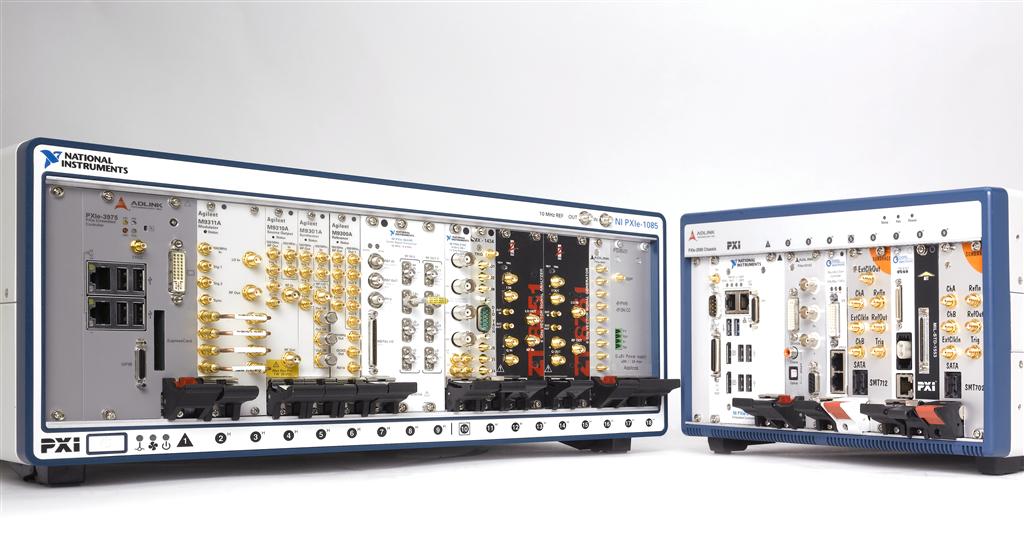Description
The National Instruments USRP-2943 is a sophisticated Software-Defined Radio Device that comes with part numbers 783148-01 and 783925-01. This versatile device is fully compatible with Windows operating systems and can connect via Ethernet and MXIe bus connectors.
At the core of the USRP-2943 lies a powerful Kintex-7 410T FPGA, enabling robust processing capabilities. It boasts 2 input and 2 output channels, offering flexibility in handling signal processing tasks. The design is based on the RIO architecture, which facilitates intricate system designs.
With precise gain steps of 0.5 dB for both the transmitter and receiver, the USRP-2943 allows for fine-tuned signal control. It operates efficiently on a power supply ranging from 9 to 16 V DV and can handle a maximum current of 7.5 A.
The device is equipped with 1024 MB of onboard DRAM, ensuring sufficient memory for complex operations. It supports a wide RF frequency range from 1.2 GHz to 6 GHz and an instantaneous bandwidth of 40 MHz, making it highly suitable for a broad spectrum of radio applications. Despite its powerful features, the USRP-2943 maintains a manageable weight of approximately 1.588 kilograms.
| Feature | Specification |
|---|---|
| Manufacturer | National Instruments |
| Product Name | USRP-2943 USRP Software-Defined Radio Device |
| Part Numbers | 783148-01, 783925-01 |
| Compatible Operating Systems | Windows |
| Bus Connectors | Ethernet, MXIe |
| FPGA | Kintex-7 410T FPGA |
| Input/Output Channels | 2 input channels, 2 output channels |
| Architecture | RIO |
| Gain Steps | 0.5 dB for both transmitter and receiver |
| Power Supply | 9 to 16 V DV |
| Maximum Current | 7.5 A |
| Onboard Memory (DRAM) | 1024 MB |
| RF Frequency Range | 1.2 GHz to 6 GHz |
| Instantaneous Bandwidth | 40 MHz |
| Weight | 1.588 kilograms |
Q1: What are the key features and compatibility details of the National Instruments USRP-2943 Software-Defined Radio Device, including its connection types, processing capabilities, and supported frequency range?
A1: The National Instruments USRP-2943 can be connected to a Windows operating system using Ethernet and MXIe bus connectors, and the device weighs approximately 1.588 kilograms.
Q2: What type of bus connectors can be used to connect the National Instruments USRP-2943 to a Windows operating system, and what is the weight of the device?
A2: The National Instruments USRP-2943 offers significant advantages in signal processing and system compatibility due to its powerful Kintex-7 410T FPGA core, which provides robust processing capabilities for complex tasks; its compatibility with Windows operating systems ensures easy integration with widely-used computer platforms; the variety of connectivity options, including Ethernet and MXIe, allow for flexible and convenient connection to different systems and devices; and its design based on the RIO architecture enables the development of intricate system designs, enhancing the
Q3: What are the primary features and compatibility specifications of the National Instruments USRP-2943 Software-Defined Radio Device?
A3: The Kintex-7 410T FPGA at the core of the National Instruments USRP-2943 Software-Defined Radio Device provides robust processing capabilities that enable the device to handle complex signal processing tasks efficiently, thus allowing for the implementation of sophisticated system designs within the RIO architecture framework.
Q4: Given the detailed specifications of the National Instruments USRP-2943 Software-Defined Radio Device, how does its Kintex-7 410T FPGA contribute to its signal processing capabilities?
A4: The National Instruments USRP-2943 Software-Defined Radio Device features a Kintex-7 410T FPGA for advanced processing, 2 input and 2 output channels, gain steps of 0.5 dB, and 1024 MB of onboard DRAM. It operates in the RF frequency range of 1.2 GHz to 6 GHz with a 40 MHz instantaneous bandwidth, and is compatible with Windows operating systems, connecting via Ethernet and MXIe bus connectors, all
Q5: What advantages does the National Instruments USRP-2943 offer in terms of signal processing and system compatibility due to its powerful Kintex-7 410T FPGA core, compatibility with Windows OS, various connectivity options like Ethernet and MXIe, and its RIO architecture-based design?
A5: The National Instruments USRP-2943 Software-Defined Radio Device features a Kintex-7 410T FPGA for advanced processing, offers 2 input and 2 output channels, and operates on a 9 to 16 V DC power supply with a maximum current of 7.5 A. It is compatible with Windows operating systems, connects via Ethernet and MXIe bus connectors, has 1024 MB of onboard DRAM, and supports an RF frequency range from 1.


